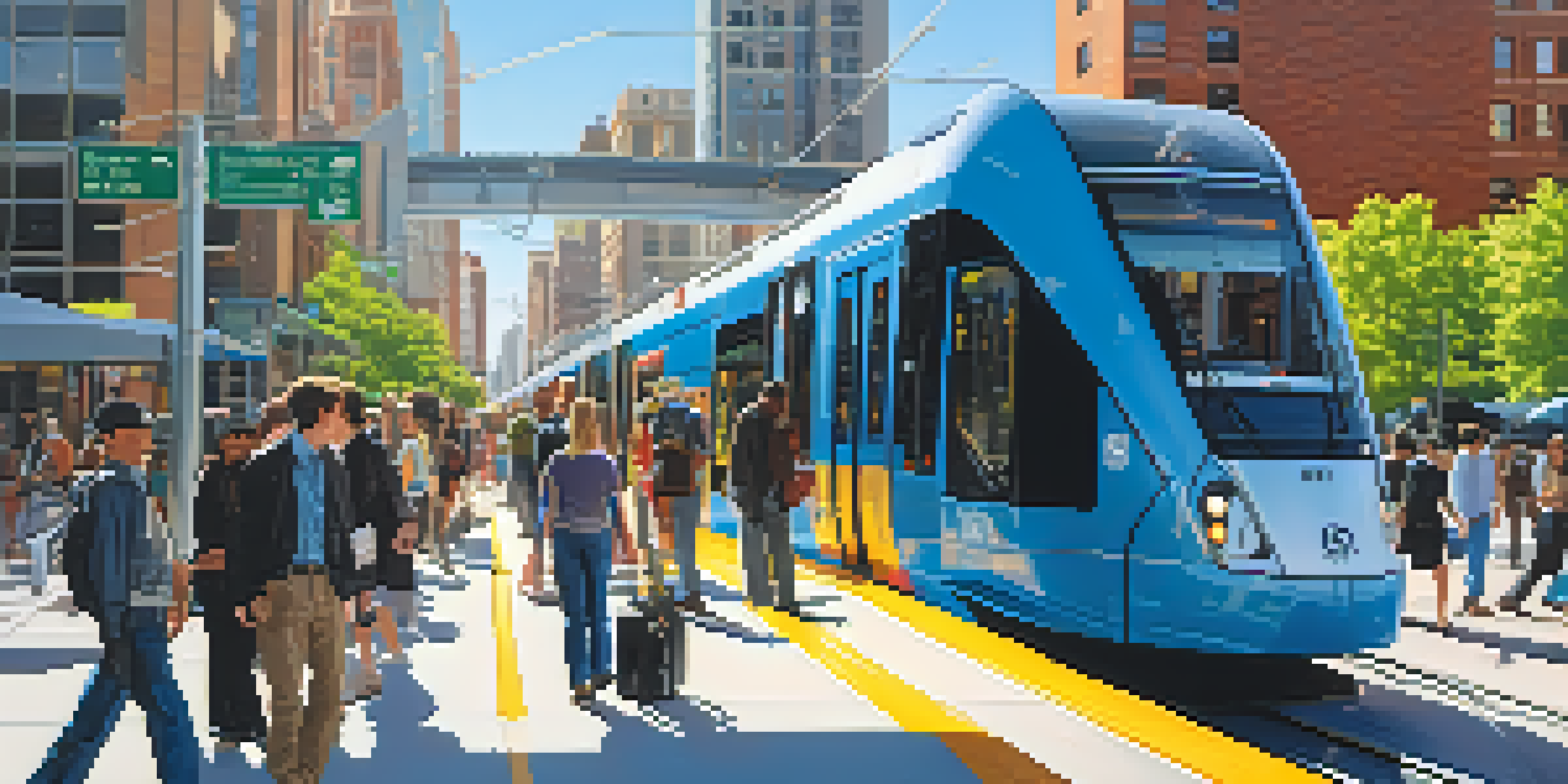Infrastructure Development in Utah: Trends and Future

Current State of Infrastructure in Utah: An Overview
Utah's infrastructure, including roads, bridges, and public transport, plays a crucial role in the state's growth. With a growing population, the demand for robust infrastructure has never been more critical. Recent assessments indicate that while many systems are functional, some areas require urgent upgrades to meet modern standards.
Infrastructure is the backbone of any society; it is essential for economic development and quality of life.
For instance, the Wasatch Front, home to a significant portion of Utah's population, faces traffic congestion issues that could hinder economic growth. To combat this, the state has initiated various projects aimed at improving traffic flow and safety. This includes expanding highways and enhancing public transport options like light rail and bus services.
Overall, the current state of infrastructure in Utah is a mixed bag, with some areas thriving while others need attention. As the state looks towards the future, addressing these disparities will be essential for sustainable growth and development.
Key Trends in Infrastructure Development in Utah
One of the most notable trends in Utah's infrastructure development is the increasing emphasis on sustainability. With a focus on reducing carbon footprints, projects are now incorporating eco-friendly materials and practices. For example, new road constructions are using recycled materials, which not only help the environment but also cut costs.

Another trend is the integration of smart technology into infrastructure. From smart traffic lights that adapt to real-time traffic conditions to app-based public transit systems, technology is transforming how residents interact with their infrastructure. This shift is not just about convenience; it also enhances safety and efficiency.
Infrastructure Needs Urgent Upgrades
Many areas of Utah's infrastructure require immediate attention to meet modern standards amid a growing population.
Lastly, there's a growing commitment to community involvement in infrastructure projects. Residents are being asked for their input on local developments, ensuring that projects meet the needs of the community. This trend fosters a sense of ownership and pride among Utahns, making infrastructure a collaborative effort.
Challenges Facing Utah's Infrastructure Development
Despite its advancements, Utah's infrastructure faces several challenges that could impede future development. Funding remains one of the most pressing issues, as many projects rely on state and federal budgets that are often stretched thin. This financial strain can lead to delays and compromises in project scopes.
Sustainable infrastructure is not just a choice; it's a necessity for the future of our communities.
Additionally, rapid population growth presents its own set of challenges. As more people move to Utah, the demand for services and infrastructure increases exponentially. This surge can outpace planning efforts and lead to overcrowding and insufficient services in urban areas.
Furthermore, environmental concerns are becoming increasingly critical. As infrastructure projects expand, they must also consider their impact on natural landscapes and ecosystems. Balancing development with environmental preservation is a delicate task that will require innovative solutions and public cooperation.
The Role of Government in Infrastructure Development
Government plays a pivotal role in shaping Utah's infrastructure landscape. Local, state, and federal agencies work together to prioritize projects and allocate funding. This collaboration is essential for addressing the diverse needs of Utah’s growing population.
Recently, the state government has increased its focus on long-term planning, emphasizing projects that not only meet current demands but also anticipate future needs. This forward-thinking approach aims to create a resilient infrastructure that can adapt to changing circumstances over time.
Sustainability Drives Development Trends
There is an increasing emphasis on eco-friendly practices and smart technology in Utah’s infrastructure projects.
Moreover, government initiatives are increasingly promoting public-private partnerships. By collaborating with private companies, the state can leverage additional resources and expertise, ultimately leading to more efficient and innovative infrastructure solutions.
Innovative Projects Shaping Utah's Infrastructure Future
Utah is home to several innovative infrastructure projects that are setting the standard for future development. One noteworthy example is the expansion of the FrontRunner commuter rail system, which aims to connect more communities and reduce road congestion. This project not only enhances public transportation options but also encourages less reliance on personal vehicles.
Additionally, the state is investing in smart city initiatives that utilize technology to improve urban living. These projects include smart street lighting and traffic management systems that enhance safety and efficiency. By leveraging technology, Utah is paving the way for a more connected and responsive infrastructure.
Furthermore, renewable energy projects, such as solar farms and wind energy installations, are also part of the infrastructure evolution. These initiatives not only contribute to a sustainable future but also create jobs and stimulate economic growth, showcasing the multifaceted benefits of modern infrastructure development.
Community Engagement in Infrastructure Planning
Community engagement is becoming a cornerstone of infrastructure planning in Utah. As residents become more vocal about their needs and preferences, planners are recognizing the value of incorporating local insights into project designs. This shift ensures that developments are not only functional but also align with community values.
Public meetings, surveys, and online forums have become common tools for gathering feedback. By actively involving citizens in the decision-making process, planners can create more inclusive and relevant infrastructure solutions. This approach builds trust and fosters a sense of community ownership over local projects.
Community Engagement Shapes Planning
Active involvement of residents in infrastructure planning ensures that projects align with local needs and values.
Moreover, successful community engagement can lead to better outcomes. When residents feel heard and valued, they are more likely to support and participate in infrastructure initiatives. This collaboration can significantly enhance the effectiveness and sustainability of projects, ultimately benefiting everyone involved.
The Future of Infrastructure in Utah: What Lies Ahead
Looking ahead, the future of infrastructure in Utah is poised for transformation. As the state continues to grow, the need for innovative and sustainable solutions will be paramount. Planners and policymakers will need to think creatively to address challenges while maximizing resources.
One potential avenue for future development is the increased use of green infrastructure. This approach not only aims to improve urban spaces but also to enhance resilience against climate change. Strategies such as green roofs, permeable pavements, and urban forests can provide ecological benefits while addressing infrastructure needs.

Ultimately, the future of Utah's infrastructure will depend on a collaborative effort between government, private sector, and the community. By embracing new technologies, sustainable practices, and open communication, Utah can build a robust infrastructure that supports its residents for generations to come.